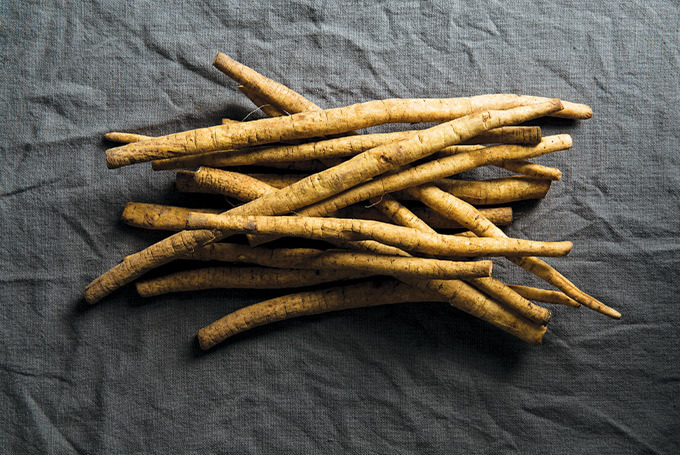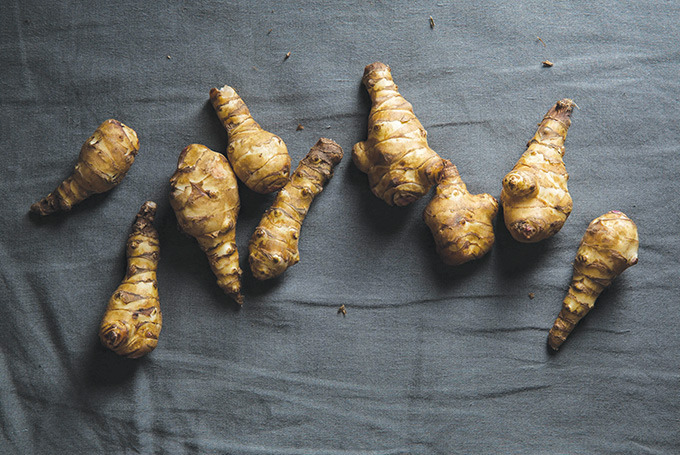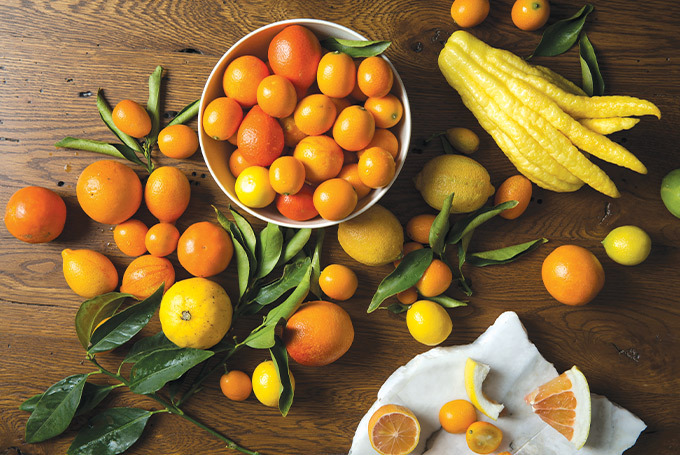'Dandelion & Quince' Cookbook Review
Break out of your roasted squash rut
We may receive a commission on purchases made from links.
Stop being lured by the popular kids in the produce aisle this season. There's a wide world of fruits, vegetables and herbs that are good enough to steal your attention away from those heaping bins of potatoes and squash. In her cookbook, Dandelion & Quince, San Francisco cooking school instructor Michelle McKenzie explains exactly why we should love what she refers to as "outliers." She leads by example, mixing smoked fig leaves into sugar for crumbly butter cookies, steeping tea from fresh kumquats and treating her backyard weeds with love.
Though the ingredients might be new to you, McKenzie introduces them in a way that won't leave you frantically clicking over to Google for more information, and the recipes use familiar cooking techniques to make these roots and greens that much more accessible. So the next time you're at the farmers' market, look for these five hidden gems and give your fall vegetable side dishes a makeover.
① Burdock
This fiber-rich root looks like a broomstick that lost its bristles in combat. It's well-known in herbal medicine for its potential antioxidant powers, but you'll also find widespread burdock use in Japanese cuisine. In her book, McKenzie shares recipes for turning burdock into an immunity-boosting broth and braising it in olive oil for a condiment-like staple. She also shows how to grate it for fritters and mix it with mushrooms for a spread to top an open-face sandwich. Another pro tip: Don't peel the root before you cook it, as that discards a main source of flavor.
② Sunchoke
Or the artist formerly known as the Jerusalem artichoke. This nutty thumb-sized tuber is also called an earth apple, but seeing as it's related to neither artichokes nor apples, stick to the sunnier term. McKenzie shows you how to mandoline sunchokes for a shaved fall salad, purée them for soup or simply roast pieces for a fall side. We also suggest pickling them to have on hand, so you can unleash a ray of light onto your meals during the coldest months.
③ Celeriac
This bulbous root's likeness to Yoda likely accounts for why McKenzie calls it "the most unsung of all vegetables." Also known as celery root, mashed celeriac makes a satisfying alternative to potatoes, or works as a sub for its more recognizable and traditional celery cousin in chestnut-sourdough stuffing.
RELATED Meet Your New Favorite Pickle "
④ Buddha's-Hand
Though technically a fruit, you can incorporate this aptly named exotic citrus into your cooking like you would a new vegetable. Mandarinquats, pomelos and Buddha's-hands make their way into six-citrus rice salad, or take McKenzie's suggestion to add shaved citrus to olive marinade. It's a symbol of happiness in Chinese culture, which you'll surely understand once you try a piece of chocolate-covered candied rind or McKenzie's bright carrot-citron soup.
⑤ Mustard Greens
McKenzie dubs these the "black sheep" of her cookbook, since most people are turned off by their strong bitter taste. But underneath their rough edges, these greens contain multitudes: They're a choice vegetable for pickling, can dress up roasted squash and might even hold cancer-healing powers. If you want to give mustard greens a solo performance, simply blanch them to remove any overwhelming pungency.
From Dandelion & Quince by Michelle McKenzie © 2016 by Michelle McKenzie. Photographs © 2016 by Rick Poon. Reprinted by arrangement with Roost Books, an imprint of Shambhala Publications, Inc. Boulder, CO. www.roostbooks.com



